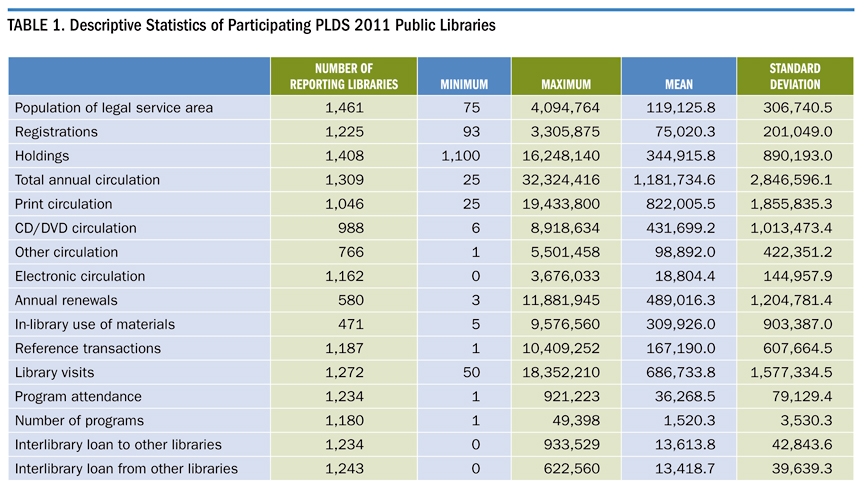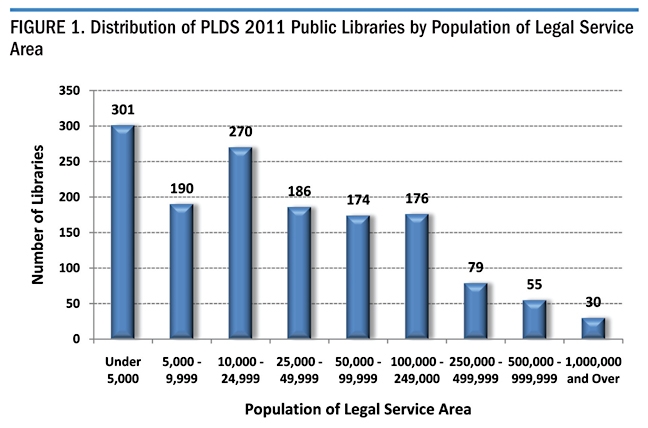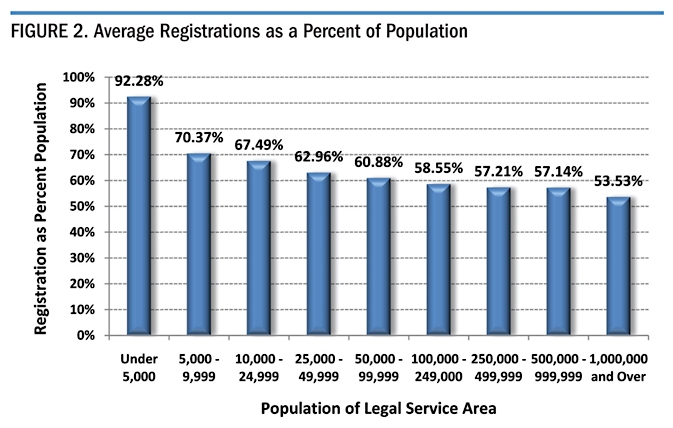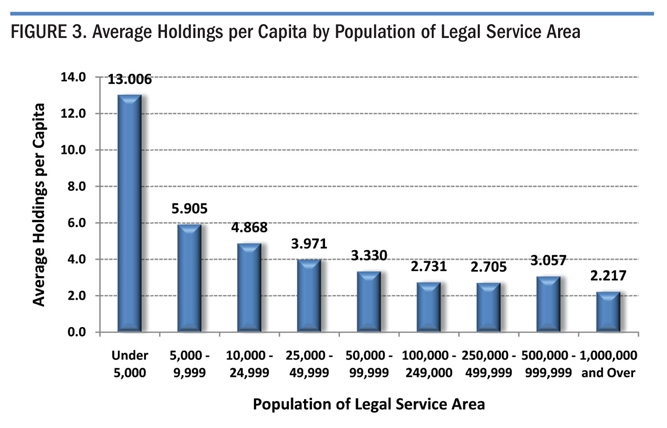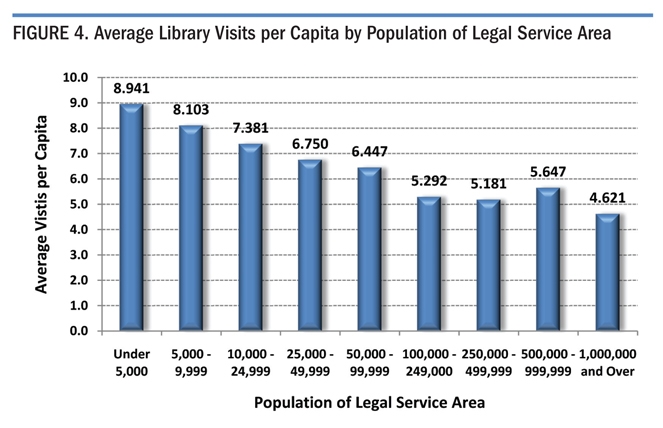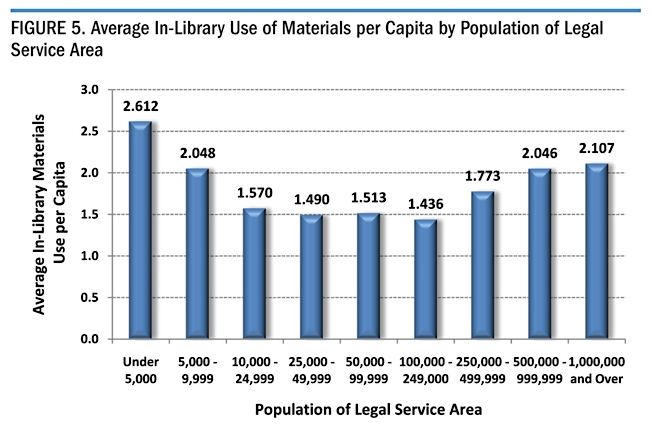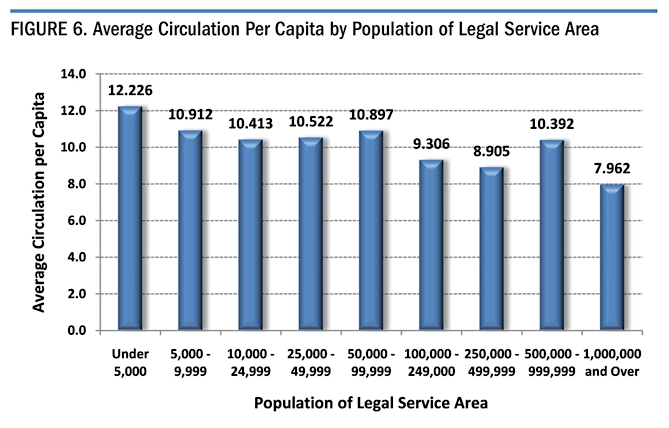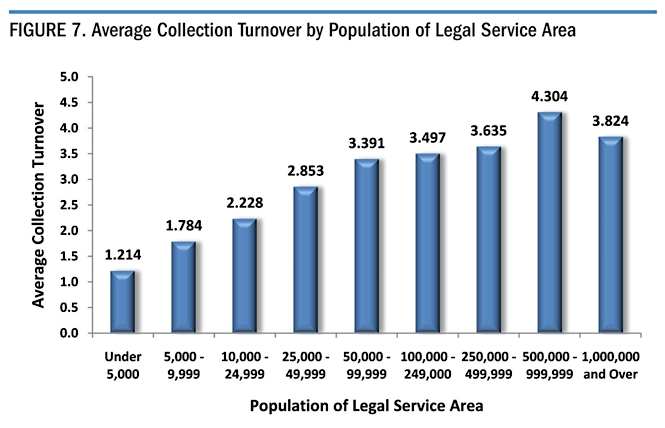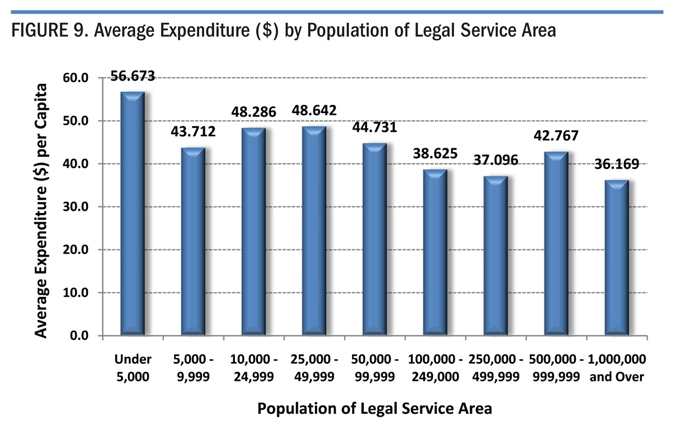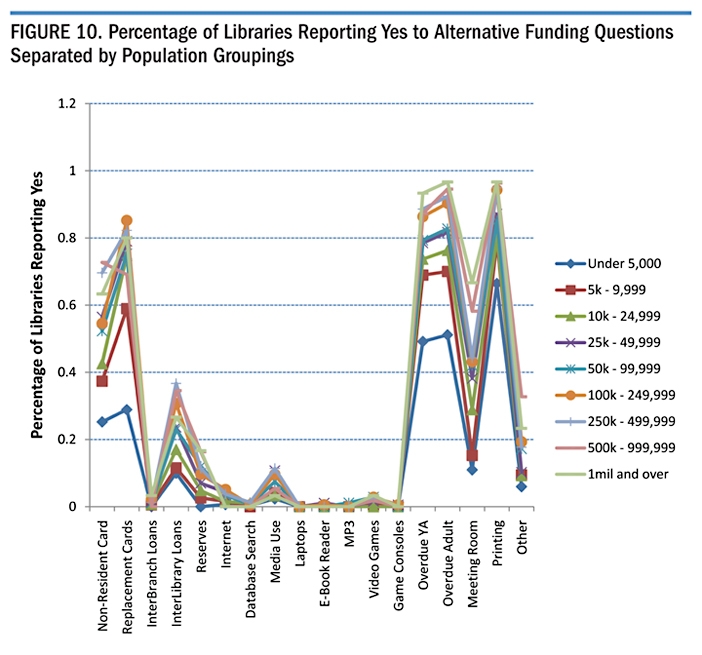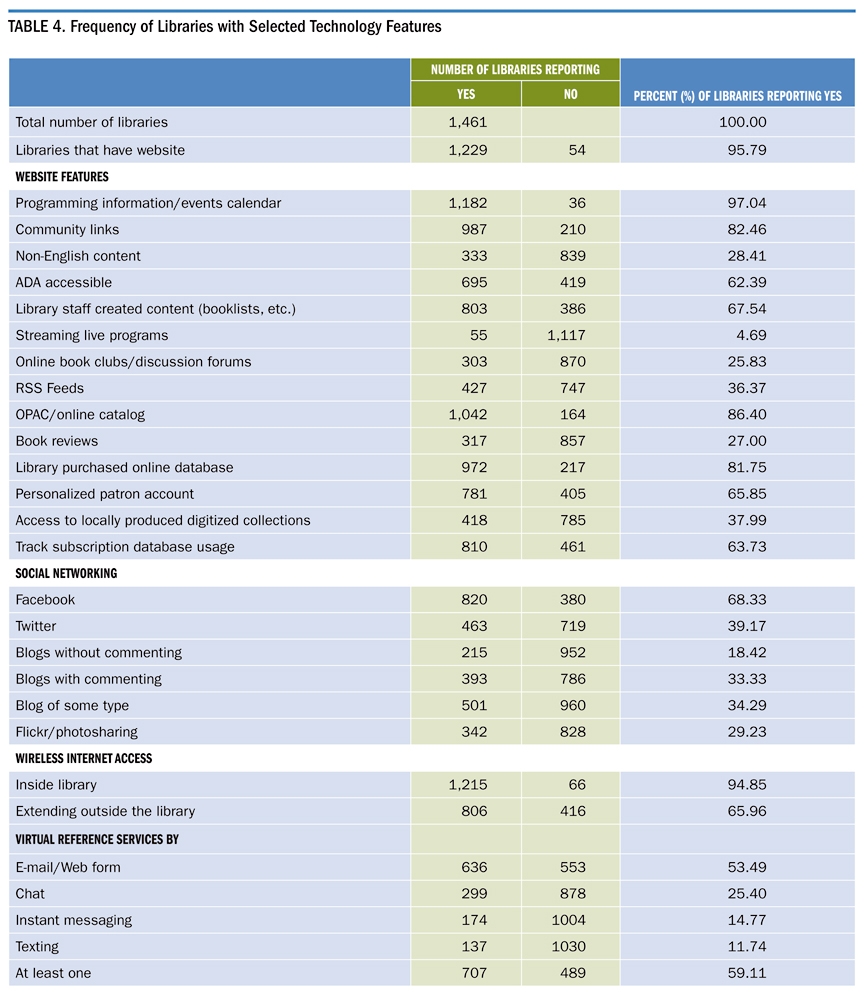The Public Library Data Service 2011 Statistical Report: Characteristics and Trends
The Public Library Data Service (PLDS) is an annual survey conducted on behalf of the Public Library Association (PLA) where public libraries from the United States and Canada provide information on finances, library resources, annual use figures, technology, and additional yearly special categories. Access to timely, accurate, and relevant data is an essential component for public libraries for comparative analysis and to validate administrative functions. The PLDS has been providing such data to the library community since 1988. The raw results and some summary data of this survey are published by PLA as an online subscription longitudinal database containing six years of data and as yearly print reports (www.pla.org). Rather than duplicating results available directly in that report, this recurring paper presents trends and insights across the data and across population groups.
Research Method and Context
This study used data from the PLDS 2011 Statistical Report. For the second year, all public libraries in the United States and selected Canadian public libraries were invited to participate in the survey. Postcards in two rounds separated by two months were used for invitations to all libraries (9,269) complemented with three e-mails to the set of library respondents from past years who supplied e-mails that remained valid (2,215). The number of respondents continued to increase this year with 1,603 libraries responding to the request for data, a response rate of 17.3 percent (an increase of 5.4 percent from last year). However, due to the voluntary nature of this survey, there was a high dropout rate, and many libraries had to be contacted for additional data. Although only 1,461 libraries were included in the final data analysis, this number still represented a significant rise over last year’s number of 1,105 and 852 the year before that. An even higher response rate may have been possible with more advertising of the survey and if a more expensive distribution method of invitations was utilized,but an overall increase in total responses was still achieved. If libraries could quickly report state survey data that directly correlates with PLDS data, an even higher response rate could be achieved; however, there is not a one-to-one correlation among all surveys, and the reporting time of the PLDS survey is much quicker than the state surveys. In the end, 1,461 libraries completed more than 15 percent of the survey, were validated following data checking, and were included in the final report and online database. For each of the continuous variables, the following statistics were obtained for this report: number of libraries reporting, minimum, maximum, mean, standard deviation, and, when appropriate, t-tests and ANOVA. For each of the categorical variables, frequencies of responses, percentage of libraries responding, and chi-squared, when appropriate, were computed. Calculations were completed using Microsoft Excel 2010 and SPSS v.19 (www.spss.com). For copies of the survey and full wording of the questions included, please refer to the statistical report or longitudinal database.
Overall Service
Table 1 provides a statistical summary of selected characteristics of participating PLDS 2011 public libraries. The responding libraries in the 2011 PLDS Report ranged in size from those serving 75 to 4,094,764 people in their legal service areas. Figure 1 presents the distribution of participating libraries by population of legal service areas represented. The expanded survey pool allowed for an increased level of participation among libraries with smaller legal service areas even more pronounced than in previous PLDS surveys. As expected, this change in the research pool changed overall statistical averages, but did not affect many statistics when pooled by population groupings. Overall for the 2010 fiscal year, 1,225 PLDS libraries responding to the appropriate questions served 91,899,913 registered patrons and a population of 174,042,789 in the United States and Canada. Both numbers represent a large increase from last year.
The PLDS Survey included descriptive characteristics of a variety of important library statistics. While descriptives on all variables are given in the full PLDS Statistical Report, a selection of noteworthy variables are presented here (see table 1). For example, in the 2010 fiscal year, library holdings ranged from as few as 1,100 to as many as 16,248,140 items among the 1,408 reporting libraries. PLDS libraries circulated items 1,187,734.6 times on average, representing a continued reduction of 23.7 percent over last year’s average. Once again, this circulation change is indicative of change in overall sample since smaller libraries tend to have lower total circulation numbers since circulation per capita actually went up as shown later. For the second time, the PLDS report included circulation counts for independent types of materials in 2011. Of libraries reporting these counts, print items circulated 822,005 times on average, CD/DVD items were circulated 431,699 times on average, and all other materials were circulated 98,892 times on average. Since not all libraries reported all counts, these should not be directly compared to the overall circulation average above. For those including annual renewals in their circulation counts, 489,016 or 23.8 percent of the total circulation was accounted for by renewals on average. Meanwhile, materials were counted as used within the library 309,926 times on average, and electronic circulation accounted for 18,804.4 circulation counts on average.
In other areas of service, PLDS libraries on average performed 167,190 reference transactions, had 686,733 library visits, provided 1,520 programs to 36,268 patrons, and provided 13,614 materials to other libraries while receiving 13,419 materials from other libraries annually. All of these total pool numbers represent decreases from last year and reflect the change in population sample.
Selected Library Services by Population
The population of legal service area of individual libraries influences many relevant output measures. Several of these measures are visualized in figures 2–7. For some of the trends analyzed, a pattern can be seen in the visualizations as in past years. For example, when viewing library registrations as a percent of population (see figure 2), the percentage increased greatly as the population size decreased, going from 53.53 percent to 92.28 percent, and the differences in number of registrations across population groups were statistically significant (F(8,1216)=8.950, p<0.001). Smaller population area libraries tended to register a larger proportion of their legal service area as has been seen in past years.
Average holdings per capita show an even more dramatic shift with population served (see figure 3). Libraries serving populations below 5,000 had average holdings per capita over 5.8 times those of the largest libraries. Generally, as the population served grew, the average holdings per capita decreased, which is understandable given that a certain lower limit of books is needed for a library independent of population size, and electronic titles have allowed all libraries to expand without spatial boundaries. Libraries serving populations of 5,000 to 9,999 individuals had the second highest value of average holdings per capita at 5.905 and were 2.66 times as high as the lowest value of 2.217 for libraries serving over 1,000,000 individuals. Holdings per capita (F(8,1399)=65.06, p<0.001) and holdings overall (F(8,1399)=248.17, p<0.001) varied significantly by population group. The overall average holdings per capita for all reporting libraries was 5.79 (n=1410). This value increased 22.9 percent from last year showing the continued effect introduced by the increased number of smaller libraries in the respondent pool once again.
Although not as skewed as registrations or holdings, library visits per capita continue to show a larger value for libraries serving smaller populations (see figure 4). The smallest libraries saw 1.93 more visits per capita than libraries serving over 1,000,000. All libraries serving populations under 100,000 saw at least 6.44 visits per capita annually. Both library visits per capita (F(8,1262)=5.90, p<0.001) and total library visits (F(8,1263)=534.21, p<0.001) varied significantly by population group. The overall average library visits per capita for all reporting libraries was 7.02 (n=1271) showing a slight 2.8 percent increase from last year due to the increased participation of smaller libraries.
Like last year, in-library use of materials was the least kept statistic, and it saw the largest number for libraries serving a population below 5,000. However the second largest number was for libraries serving a population of 1,000,000 and over with middle sized populations having the smallest values (see figure 5). The pattern for this statistic continues to change from year to year. The average in-library use of materials per capita for all libraries reporting was 1.80 (n=471), representing a slight decrease of 1.1 percent. Despite the large differences across groups (a range of 45 percent), the small number of respondents resulted in no statistically significant difference across population groups in this statistic (F(8,462)=0.729, p=0.666).
Average circulation per capita, although showing the smallest value for the largest population group and the largest value for the smallest population grouping, does not have a clear pattern (see figure 6). The average circulation per capita for all libraries reporting was 10.58 (n=1307) for only a 0.8 percent increase over last year due to the larger number of smaller libraries reporting. Overall, the value of circulation per capita (F(8,1298)=1.889, p=0.058) did not vary significantly by population grouping while total circulation (F(8,1300)=381.07, p<0.001) did differ significantly by population group. This difference was expected, since the total number of materials moving and population both shift as the population grouping shifts. Also, the values of print circulation (F(8,1037)=275.45, p<0.001), CD/DVD circulation (F(8,979)=166.83, p<0.001), and other materials (F(8,757)=40.887, p<0.001) varied significantly by population group. Enough libraries from each population grouping did not enter total renewals for valid cross-comparison. When looking not at population but only at registered borrowers, the effects of population are countered, and the circulation differences are not significantly different between population groups for the circulation per registered borrower (F(8,1112)=0.444, p=0.895). This statistic, coupled with the fact that libraries serving smaller populations tend to have a higher percent of their potential population registered as shown in figure 2, shows that registrations as a percent of population may be a useful parameter to measure circulation against when comparing libraries of variable size or service area.
Collection turnover allows a library to see how often items within the collection are being used by dividing the total circulation by the total holdings. When analyzing collection turnover (see figure 7), the graph skewed in the opposite direction as other figures as was expected. Larger population libraries had a significantly larger average collection turnover than smaller population libraries (F(8,1274)=28.822, p<0.001), with the largest collection turnover for libraries serving a population of 500,000 to 999,999 and the smallest collection turnover for libraries serving a population under 5,000 (a 3.54x difference). The overall average for all reporting libraries was 2.605 items circulated per item held (n=1283), a 7.9 percent decrease from last year due to the increased participation of smaller libraries and the increased magnitude of the difference.
While overall averages are reported here and are a useful means for a general picture of library services, the net effect of the change in survey population two years ago has resulted in an overall adjustment in all of the given averages this year even when compared to last year’s overall averages. It continues to be important to look not just at overall averages but also at population grouping averages. When one looks specifically at a single population grouping, a certain value may be more informative for a given library. For example, if one looks at average circulation per capita for most library populations, they appear close to last year, but for libraries serving a population below 5,000, the net percent change was 23.7 percent as opposed to the 0.8 percent for the sample as a whole. Being able to make such comparisons highlights the usefulness of comparative data in an online database.
Operating Finances
Income and expenditure measures are a primary concern of many libraries and are therefore a major section within the PLDS report and all library statistical reports. Averaged over all respondents, library income was $5,171,510 per year or $49.42 per capita in the legal service area (n=1341; $48.01 last year for an increase of $1.41 per capita) while library expenditures were $5,011,093 per year or $46.52 per capita in the legal service area (n=1341; $45.31 last year for an increase of $1.21 per capita). The most notable change was a large increase seen in the under 5,000 values making up for the overall decrease in per capita finance values seen in previous years. When looking at individual libraries, however, there was no significant change in income per capita in the 2011 survey (M=$49.77, SD=47.45) versus the 2010 survey (M=$49.77, SD=41.55) or expenditure per capita in the 2011 survey (M=$47.94, SD=48.64) versus the 2010 survey (M=$46.88, SD=36.94), (tdiff-Inc(669)=0.003,p=.998) (tdiff-Exp(675)=0.826, p=.409). So while the overall averages increased, the individual library values tended to stay approximately the same comparatively.
Overall income and expenditures averages rose for libraries as well; however, the per capita averages by population groupings showed no pattern of increase or decrease from last year as some went up, down, or stayed approximately the same (figures 8 and 9 show 2011 values). Income and expenditures per person were largest for the libraries serving populations below 5,000 followed by those serving middlesized populations and smallest for libraries serving the largest populations. Fluctuations by population groupings were relatively identical between raw income and expenditure values, but unlike previous years, income per capita (F(8,1332)=1.551, p=0.135) and expenditure per capita (F(8,1348)=1.488, p=0.157) did not vary significantly by population group. However, raw total income (F(8,1332)=401.05, p<0.001) and total expenditures (F(8,1348)=418.79, p<0.001) did vary significantly by population group as expected due to the variable tax bases and other variables. Interestingly, total average income failed to exceed total average expenditure for the largest population groupings (libraries serving more than 500,000), for the first time in the four years of this analysis.
Although income and expenditures are usually compared against total population, resulting in significant statistical results in prior years but not this year, when they are compared against total registrations, a different result is usually seen. Fluctuations in income per registration (F(8,1132)=0.329, p=0.955) and expenditure per registration (F(8,1143)=0.392, p=0.926) were not at all different by population grouping. Libraries tended to acquire and spend money equally based on the number of registrations.
For the second year, the PLDS survey divided materials expenditures into categories by type of material. Overall, libraries spent $7.88 per capita on materials, but the variability was 2.26 times as large as last year with a range of $0.00 to $154.94. This change also represented an increase of $2.16 over last year, but the increase could partly be due to the increased number of smaller libraries participating this year, as they tend to have a larger per capita materials expense. As with the total raw expenditures, the expenditures on materials in total and the expenditures on materials by all types were seen to vary significantly by population groups (FMatTotal(8,1294)=307.66, p<0.001; FMatPrint(8,1275)=240.87, p<0.001; FMatCD/DVD(8,1165)=126.48, p<0.001; FMatElectronic(8,1191)=196.93, p<0.001). Unlike total expenditures, materials expenditures per capita did vary significantly by population groups (F(8,1294)=4.426, p<0.001). Furthermore, materials expenditures as a percentage of total expenditures varied significantly by population grouping (F(8,1290)=10.971, p<0.001). Although total expenditures per capita or per registration did not vary by population grouping this year, materials expenditures per capita did vary significantly, demonstrating that other costs offset this difference overall.
The special section in this year’s PLDS survey covered library finances and alternative sources of income. Variability and range in terms of governmental sources of income and alternative sources of incomes was clear and shown in the PLDS Statistical Report and not repeated here. A Chi-Squared analysis of items for which libraries charge showed that either there was a significant difference by population group because of the high variability in whether any given library charges or there was no significant difference because very few libraries charge for that feature, basically making the analysis meaningless. A graphical representation becomes more meaningful. Figure 10 summarizes the percentage of libraries reporting alternative funding sources parsed by population group. In general, the larger the population group served, the higher the percentage of libraries that charge for an item. Printing (n=1,200), overdue materials (n=1,102), replacement library cards (n=956), non-resident cards (n=668), and space rental (n=447) were the most common alternative funding sources overall. Several items were rarely charged fees as the graph shows. Common other options entered as charges that might be considered for future surveys included headphone rental, lost and damaged materials fees, flash drives, and exam proctoring.
Library Outputs in Relation to Expenditure
Always there is a need to validate that expenditures yield results within a public library. Table 2 summarizes various library outputs as a function of expenditure. In 2011 per $1000 spent, libraries on average received 179 (168–149 last two years) library visits, circulated 260 (254–235 last two years) materials, saw 12.1 (10.5–9 last two years) patrons attend programs, fielded 25.3 (26.9–29 last two years) reference transactions, measured 47.2 (49.1–48 last two years) uses of materials within the library, and registered 20.0 (18.5–17 last two years) new patrons. Reference transactions continued to decrease, suggesting a continued use of online portals. Overall, compared to the 2010 survey values, most other numbers except in-library materials use (possibly lowered by increased participation of smaller libraries) were up slightly on average, meaning that per $1,000 of expenditures, libraries were experiencing slightly more output measures on average, continuing the trend from last year.
While the overall averages are informative, outputs in relation to expenditure clearly varied with respect to population grouping for some of these library outputs (see table 3). Per $1,000 of expenditures, library visits (F(8,1241)=2.756, p<0.005), program attendance (F(8,1206)=18.265, p<0.001), reference transactions, (F(8,1156)=3.963, p<0.001), and library registrations (F(8,1143)= 4.912, p<0.001) varied significantly by population group. Circulation per $1,000 of expenditures (F(8,1279)=1.101, p=0.359) and in-library materials usage (F(8,455)=4.912, p=0.448) did not vary significantly by population grouping. It is interesting that circulation per capita (see above) and circulation per $1,000 expenditure do not vary significantly by population grouping while total circulation does, showing that these two factors equalized circulation statistics.
Technology
Technology continues to be a major component in the modern public library that has become almost indispensable in numerous aspects. This year, the PLDS survey altered slightly to include social networking questions while removing Internet filtering and other questions such as basic library information on websites that were already present at most libraries. All questions were converted from check boxes to yes/no questions as well to better gather statistics.
The majority of PLDS libraries made use of numerous website features as shown in table 4. The number of libraries that reported having a website remained steady at 95.79 percent. The contents of these websites remained relatively constant with programming information/events calendars up slightly (97.04 percent), online catalogs down slightly (86.40 percent), and community links (82.46 percent) being the most prevalent items. Other website features were less prevalent, but ADA accessibility, staff created content, personalized patron accounts, and tracking of database usage were all present at greater than 60 percent of the time.
Social networking demonstrated its importance to public libraries. Facebook sites existed for 68.33 percent of responding libraries, and Twitter accounts existed for 39.17 percent. Out of 1,461 libraries, 501 (34.29 percent) reported having a blog of some type as well. Even 29.23 percent of libraries reporting had some form of photosharing service functioning. Wireless Internet continued to be important as a service to patrons. The availability of wireless Internet remained high this year at 94.85 percent. Furthermore, libraries with wireless Internet access extending outside the library rose again from 60.70 percent to 65.96 percent.
Virtual reference services use continued its decline from last year overall; however some of this decline could be due to the increased participation of smaller libraries without such services. The use of these services remained in the same order of preference, with e-mail/Web forms (53.49 percent compared to 60.96 percent last year) used twice as often as online chat services (25.40 percent compared to 32.42 percent last year), which were nearly twice once again as instant messaging (14.77 percent compared to 18.37 percent last year). These values remained larger than the only category that saw an increase, texting services (11.74 percent compared to 8.79 percent last year); 59.11 percent of libraries had at least one form of virtual reference service.
Future Directions
The 2012 PLDS survey will run from January to April 2012 and will include a special section on young adult services, which have not been covered since the 2007 survey. Any library not receiving an invitation is encouraged to contact PLA for more information. The PLDS online database will also be undergoing changes in the coming year as it moves vendors to Counting Opinions, with the potential for added features and utility, although the current system already proves very useful. Finally, as more data becomes available, a more thorough longitudinal analysis can be performed to track trends across years that might highlight the impacts of recent events across library statistics. One can look forward to a view of these trends and the discussions they may create.

